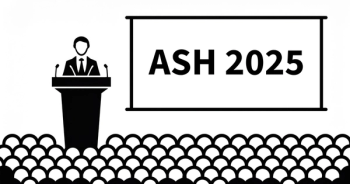
Peers & Perspectives in Oncology
- August 2025
Selinexor Shows Potential Role in PI-Naive Relapsed Multiple Myeloma
During a live event, Binod Dhakal, MD, and participants discussed their experience using selinexor in the second line and beyond in patients with multiple myeloma.
With rapidly evolving regimens in the front line of multiple myeloma treatment, patients are eligible for a diverse range of options after the first relapse based on their age, comorbidities, and what agents they are refractory to. The question of how to treat a patient who had received an anti-CD38 antibody, is over age 80, and not a candidate for chimeric antigen receptor (CAR) T-cell therapy was discussed in recent
DISCUSSION QUESTIONS
- When is selinexor presented as a treatment option for your patients?
- Earlier lines post-CD38 antibody relapse
- Non–CAR T-cell therapy candidate
- Bridging therapy
- Post–B-cell maturation antigen (BCMA) therapy/later lines
Camille Abboud, MD: The patient I used selinexor for bridging was on selinexor and dexamethasone at 60 mg every 7 days and I added pomalidomide to it during the bridging. They [received] radiation for the area outside before the CAR T.
Madhu V. Midathada, MD: [I used it for] bridging to CAR T.
Binod Dhakal, MD: Was it able to hold the disease while you were bridging?
Midathada: No, unfortunately, he didn't make it to CAR T.
Abboud: My patient was able to go to ciltacabtagene autoleucel [cilta-cel; Carvykti]. It was tough. He did well for a while and then relapsed around the heart with tamponade and myocardial involvement. We had to do low-dose radiation to deal with that, and he eventually ended up being on [elranatamab (Elrexfio)], but he's still alive.
Mark Fesler, MD: I've had 2 [patients given selinexor] monotherapy, both in the later-line setting. One patient passed shortly after initiating the regimen, probably for reasons that weren't directly related to it. The other patient did bridge to CAR T-cell therapy and handled it fairly well. I don't have any combination experience to report. I wonder if this is synergistic with proteasome inhibitor [PI] vs just an add-on. I started at 60 mg and got to 80 mg, and both of them seem to handle the 80-mg dose fairly well.
Dhakal: I think there definitely seems to be some synergism with the PI. We're basing that on 1 study [BOSTON], and there are combinations from another trial [STOMP (NCT02343042)], but the PI-naive patients had seemed to benefit significantly better than what you would expect.
Based on the BOSTON trial data, what do you think of the second-line use in a post-CD38 relapse patient, where you have the majority of these patients, especially in the older patient population? What do you think of the study, and what are some of the challenges that you would encounter in the second line? This is a patient population who potentially cannot go to CAR T in the second line or perhaps cannot use some other more intense treatment and already are exposed to CD38.
Rabih C. Fahed, MD: I think this is the best regimen for [an older PI-naive] patient. They're not going to be a candidate for bispecific [or] not a candidate for CAR T. At least if we use selinexor, bortezomib [Velcade], and dexamethasone in the second line, we still have the option of pomalidomide-based therapy in the third-line setting. We'll open the horizon for future available treatment outside the CAR T and the bispecific, which probably they are not going to be a candidate for.
Dhakal: Right now, the bispecific is not approved in the second line.
Fahed: I'm talking about the third line and subsequent lines, but yes, the only CAR T approved is the cilta-cel in the second-line setting. But I think this regimen is very tolerable, as long as we can deal with gastrointestinal [GI] toxicity, and dose reduce, and it's a once a week. I think we'll keep the option of pomalidomide [Pomalyst]-based therapy in the third-line setting.
Dhakal: You have a patient you acquired from [another physician] on this regimen. How long the patient was on it? Can you share your experience?
Fahed: [They were treated] for 2 years on 80 mg once a week.
Dhakal: It’s almost like the progression-free survival that the [PI-naive] patients got in the [BOSTON] study, 29 months.1 Great.
Kailash Mosalpuria, MD, MPH: How long does the GI adverse event [AE] last after a dose?
Dhakal: It depends. My experience has been that it’s as long as you're using the drug. If you stop the drug, it usually gets better right away.
Mosalpuria: Is it throughout the full week, even if you took 1 dose?
Dhakal: It depends on the patient. Some patients get it right after the use of the drug. But in general, it can last, so it's important to be [using] nausea medications and antidiarrheal medications. But once you decrease the dose, you don't see grade 3 and not even grade 2. What I have seen is just grade 1 GI AEs and the patient usually handles it pretty well.
Mosalpuria: Based on a patient getting first-line daratumumab, lenalidomide (Revlimid), and dexamethasone, if you want to target other pathways for treatment, this combination seems reasonable, assuming that they don’t have any underlying peripheral neuropathy.
Thomas Oliver, DO: I agree. Lenalidomide and pomalidomide in older patients is not the easiest. I feel like I always have issues [in that context]. It’s not necessarily the easiest drug combination.
Dhakal: They have their own AEs too, especially the pomalidomide.
Oliver: I like [this regimen] once a week for the older patient who lives far away. Particularly for some of the people I treat at my outreach, it would be a be a decent option for them.
Dhakal: We don't have the data in the second line, but I agree. I think for the second line, especially in the PI-naive patient population, this seems to be a good combination. One thing we have to look into with older patients is peripheral neuropathy with bortezomib. I think that's something to take into account. But carfilzomib [Kyprolis] has a different AE profile. You probably are a little bit worried about it especially in older patients. We are more comfortable using bortezomib than carfilzomib.
The post-hoc analysis of this subgroup is probably going to be more relevant in our practice, given how CD38 is being used in the front line. Quadruplet is already approved in the transplant-ineligible or transplant-deferred patients, but not everybody can be quadruplet eligible. For somebody who is 80 or 85 years old coming to you with newly diagnosed myeloma, I'm more comfortable starting them on CD38 with immunomodulatory agent than daratumumab [Darzalex] or isatuximab [Sarclisa] plus bortezomib, lenalidomide, and dexamethasone. When they relapse in the second line, you need to have a good choice, based on their exposure.
Mosulparia: Would you have concerns with these BCMA–targeted agents? With bispecific T-cell engagers [BiTEs] moving into the second line, I worry where this particular combination would end up.
Dhakal: That's a good question. Right now, in the second line, besides the CAR T, there is the potentially soon to be approved BCMA antibody-drug conjugate [ADC] that is probably going to enter the market [belantamab mafodotin; Blenrep]. But it's about the risk and benefits. BiTEs are also not without risk; there are risks of infections, specifically in combination with an CD38 antibody. The ADC has its own risk with the eye issues. They are good regimens but it's all about weighing the risk and benefits. The bottom line is this regimen is good, and when you see the data subsets, I think it looks really good. It could be considered in patients who potentially can handle this regimen and still can get benefit, like Dr Fahed’s patient.
DISCLOSURES: Dhakal previously reportedhonoraria from Celgene, Karyopharm Therapeutics, Sanofi, GlaxoSmithKline; consulting or advisory role with Amgen, Takeda, Janssen Oncology, GlaxoSmithKline, Natera, Sanofi, Genentech/Roche, Pfizer, Arcellx, and speakers' bureau with Janssen Oncology. There were no other known relevant disclosures.








































